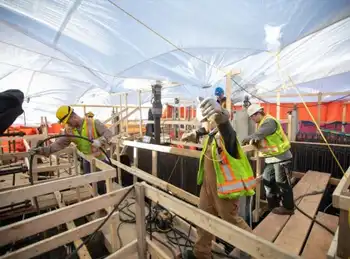NRC to study nuke-plant risks; Fallout, deaths from radiation to be predicted
PENNSYLVANIA - The U.S. Nuclear Regulatory Commission will spend the next three years studying the nation's 63 nuclear plants to develop a more accurate picture of the consequences of a major radiation release.
Among other things, the study will look at what contaminants would be released and where they would go, and predict how many people would die.
"The study will give emergency preparedness, NRC staff and (plant owners) a much clearer picture of how accidents could affect people around the plant," NRC spokesman Scott Burnell said.
Six plants, including the Peach Bottom plant in southern York County, will participate in the first phase of the study, which will eventually include every facility.
"Our position is that having better information can be nothing but a good thing," said April Schilpp, spokeswoman for Exelon Nuclear, owner of Peach Bottom. "It will help everybody plan better."
The study is the first to address potential consequences since a 1982 report conducted for the NRC by Sandia National Laboratories in Albuquerque, N.M. The Sandia study included estimates of how many people would die from a major radiation release. It projected 42,000 to 56,000 immediate deaths at Three Mile Island and an additional 26,000 to 31,500 cancer deaths.
A more recent study of the Indian Point plant outside New York City by the Union of Concerned Scientists concluded as many as 44,000 near-term deaths would result from a radiation release. The study was based on a worst-case scenario, with prevailing winds taking a radiation cloud into New York.
Burnell said the Sandia report deliberately used high numbers in its calculations, but was not meant to be used as a predictor. It was supposed to help NRC staff judge potential sites for new nuclear energy plants, he said.
The new study will look at accident sequences that NRC staff have determined have a one in one million or better probability, Burnell said.
The study will consider containment building design, reactor core composition and weather conditions. It will identify safety and operating problems and will help spot problems with emergency planning, Burnell said.
Eric Epstein, chairman of the Harrisburg-based watchdog group, Three Mile Island Alert, wanted to know more about how the study would be carried out.
"This exercise should have taken place prior to the re-licensing of a new generation of nuclear power plants," he said.
The study, minus security findings, will be released to the public, Burnell said.
"It's not going to be locked away and never shown to anyone," he said.
Related News

BC Hydro to begin reporting COVID-19 updates at Site C
VANCOUVER - BC Hydro says it will begin giving regular updates to the public and the Peace River Regional District about its monitoring of the coronavirus COVID-19 at Site C.
BC Hydro met with the Peace River Regional District Sunday via phone call to discuss the forthcoming measures.
"We did a make a commitment to provide regular updates to Peace River Regional District member communities on an ongoing basis," said spokesman Dave Conway.
"(It's) certainly one of the things that we heard that they want and we heard that strongly and repeatedly."
Conway said updates could be posted as early as Monday on BC…




